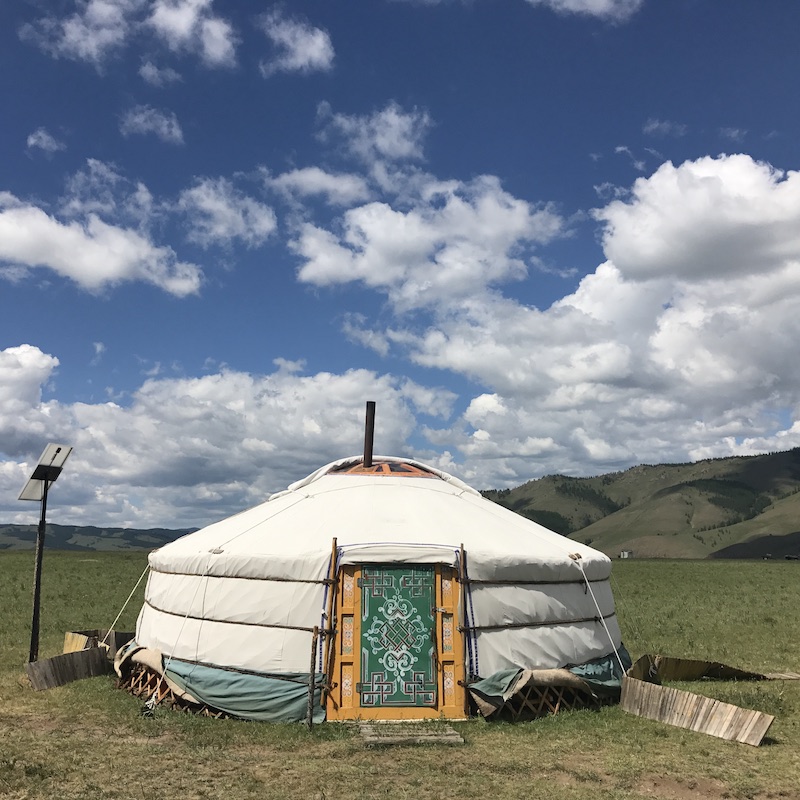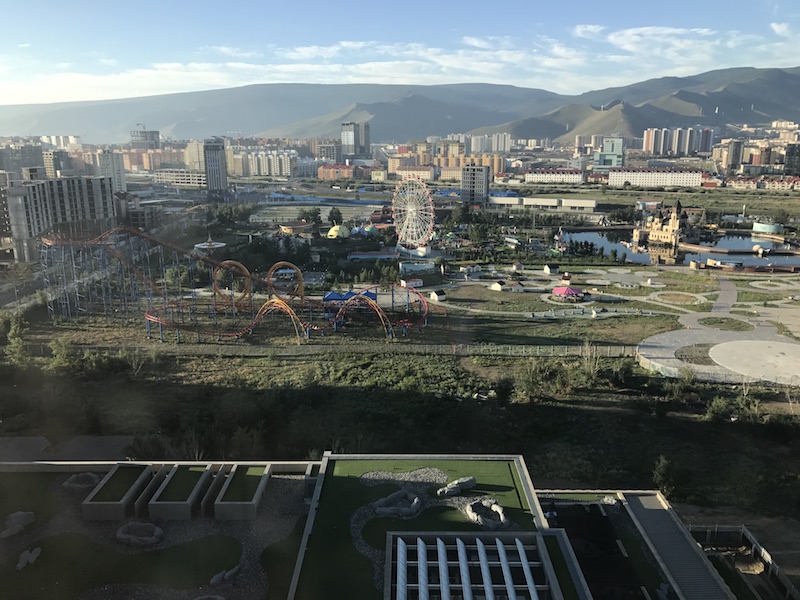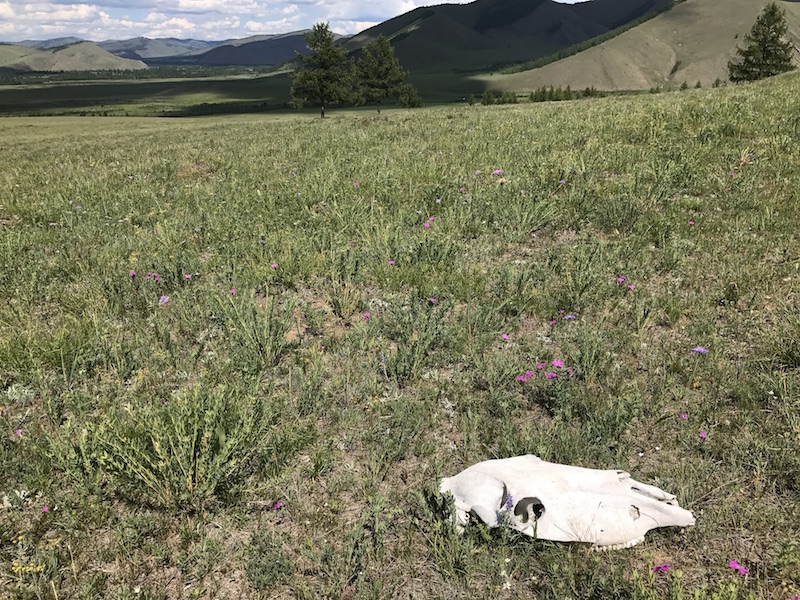As in Nepal, I was so affected by Mongolia that I’ve decided to serialize the story of my time here. Only this time, I felt admiration rather than disdain. I hope you’ll enjoy the posts over the coming days as much as I enjoyed being here.

The flight in was stunning. Those clouds are beautiful from the air. On the ground, they’re menacing!
Mongolia is a magnificent country. And, along with Bolivia, South Africa, and Scotland, it’s one of the few countries I’ve visited that I look forward to seeing again.
Prior to coming here, when I thought of Mongolia, I imagined China and Russia having a child out of wedlock and, voila, you get Mongolia.
I was wrong.
The truth is that, in many ways, The Great Mongolian Empire made it possible for Russia and China to exist in the first place. But more on that later.
After WWII, the Mongolian people needed help to escape Chinese colonizers. The only people who came to their aid were the Russians. To simplify some complicated history, that eventually led to Mongolia becoming a satellite of the Soviet Union. It’s why everything here is written in Cyrillic rather than the beautiful Mongolian script first commissioned in the late 1200s by Kublai Khan.
Today Mongolians say they live between two “lions,” but they’re more committed to one (Russia) than the other (China). Indeed, most Mongolians do not have kind things to say about the Chinese.
But even with that degree of disdain, Mongolia and China are tightly intertwined.
Several months ago, the Dalai Lama visited Mongolia. China’s response? Shut the Mongolian border for a few days. The result? An economic crisis for Mongolia.
I’m doing my part for the Mongolian economy by staying in a remote part of the Khan Khentii Strictly Protected Area. It’s where Genghis Khan was born and may be buried. It’s “strictly protected” because it was blocked off during Soviet Rule. Like most things associated with Genghis Khan, the Soviets did their best to erase it.
It’s a stunningly beautiful place with outdoor toilets and buckets for showers. I most certainly felt “out of place.”
I lived in a ger for three days. Now, some of you may look at that and say “That’s a yurt!” And you’d be partially correct. “Yurt” is the Turkish word for this structure and is met with some chagrin by locals here in Mongolia. The better term is “ger.” It’s pronounced somewhere between “gear” and “girl” (without the l).
Nearby our camp is another camp belonging to a nomadic family with about 100 cattle, 20 yaks, and another 50 or so horses. I had the chance to visit them during my stay and the experience was certainly memorable.
As I walked toward their camp, I mentioned in passing my desire to try arig. Arig is the most traditional Mongolian drink. It’s fermented mare’s milk. I’ll eat anything. My guide immediately sprung into action. The next thing I knew, I was seated in the ger with a cup of arig and some dried curd in front of me. There was also a man passed out on the floor, snoring very, very loudly. It was 2:00 in the afternoon and he had a headache… I think he’d had too much arig…
Ignoring him, I drank and ate. At first, I was cautious. But then I just went for it. The flavors were anything but pleasant — like sour milk. And picking horsehair out of one’s teeth in a new environment is…shall we say, embarrassing. The effect of the arig wasn’t noticeable – apparently, it takes a couple of quarts of the stuff to feel a “buzz.” Thankfully, it was better than the food in Madagascar.
In the middle of one sip, the snoring man kicked my chair. I held my balance, though! I did cast my glance to the other side of the ger where I suddenly noticed the woman who’d given me the fermented milk had transitioned to a new task: breastfeeding her youngest son.
Falling back on my Western sense of propriety, I averted my eyes and changed the subject by pointing out the door. “Is that a yak?” I asked.
“Oh! In Mongolia, it’s very rude to point! You mustn’t point,” admonished my guide.
Whoops. At least I effectively changed the subject.
As we were leaving our hostess (remember, the mother with a hungry kid), offered to show us how she milked the cows. So much milk in this country!
Along we went.
While she was milking (the cow), the family’s bull snuck over and mounted another cow awaiting its turn to be relieved. A kerfuffle ensued and five of the six kids living at this camp were nearly trampled to death. Just another day in the life of a nomadic family.
It was a truly mind-blowing experience.
My take-away here?is that in a harsh environment like Mongolia, there’s no room for our silly sense of shame or propriety. They’ve got jobs to do, so they do them. They live simple lives that, in many ways, are more appealing than my complicated, over-burdened daily life. They don’t need all of the “stuff” I think is necessary for survival. In fact, they survive without even being on Facebook! Can you believe it?!
I felt so warmly welcomed by this family who wanted to show me their everyday life. They didn’t “put on airs” for me. Instead, they simply included me in their daily routine. I greatly enjoyed my brief time with them.
As interesting as it?was, I didn’t come only for that kind of experience. Instead, I came to see the landscape that played so vital a role in the rise of one of history’s most expansive empires. At its height (~1309), the Great Mongolian Empire stretched from the Pacific to the Mediterranean.
And here’s the kicker: It was all conquered from the backs of horses.
Come back tomorrow to read about my experience riding a horse in Mongolia.
Spoiler alert: I survived (despite the best effort of my horse!)






